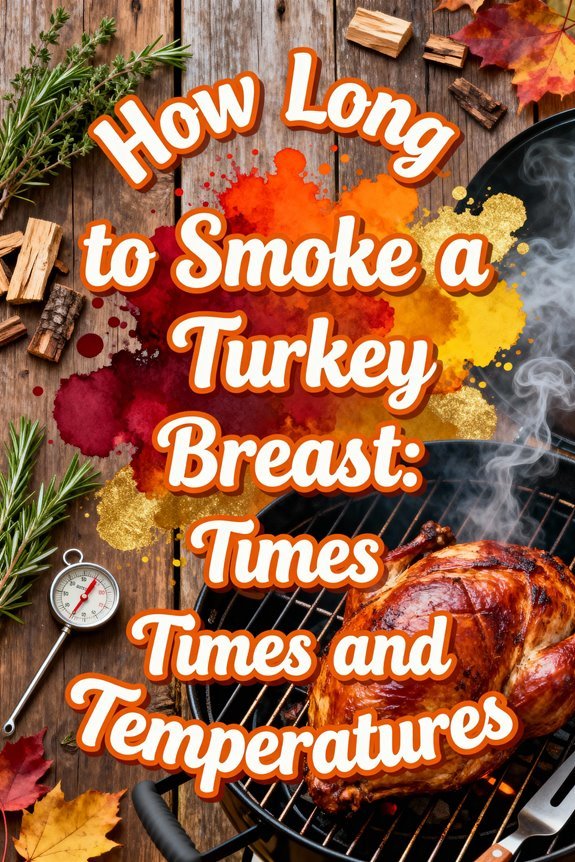You’ll want to grill chicken breasts at 400-450°F for 6-8 minutes per side, depending on thickness. Start by searing them over direct heat for 4-6 minutes per side, then move to indirect heat for another 5-10 minutes. Remove the chicken when it reaches an internal temperature of 155-160°F, as carryover cooking will bring it to the safe 165°F threshold. Let it rest for 5-7 minutes under loose foil to redistribute the juices. Below, we’ll break down the specific techniques that guarantee consistent results every time.
Essential Grill Setup and Temperature Guidelines
Before you place a single piece of chicken on the grill, establish proper heat zones and temperature control to guarantee consistent results. Effective grill preheating techniques require running your grill on high for 10-15 minutes until grates reach uniform temperature. The ideal temperature range sits between 375°F and 450°F, with 400°F representing the perfect medium heat setting for even cooking. Just like with medium burger doneness, monitoring temperature carefully ensures optimal results. Similar to achieving high heat searing around 450-550°F for flank steak, proper temperature control is essential for perfect results.
Configure a two-zone setup by concentrating heat on one side while leaving the opposite side cooler for indirect cooking. Oil your preheated grates lightly to prevent sticking and promote proper searing. This dual-zone configuration allows you to sear chicken over direct heat initially, then transfer it to the indirect zone for finishing without charring exterior surfaces or drying interior meat. Keep the grill cover closed throughout the cooking process to maintain consistent temperature and ensure even heat distribution.
Preparing Your Chicken Breasts Before Grilling
Three fundamental decisions determine your grilling success before heat ever touches the meat: selecting uniform chicken breasts, achieving consistent thickness, and managing moisture levels. Choose boneless skinless breasts of similar size—organic varieties offer superior moisture retention and texture. Pound thicker portions to guarantee even thickness throughout.
For moisture retention, employ either brining (30-60 minutes in saltwater solution) or various marinade types containing oil, acid, and aromatics—minimum 30 minutes. Pat breasts completely dry with paper towels before grilling; excess surface moisture causes steaming rather than proper searing. Allow chicken to reach room temperature 20-30 minutes before cooking. Using a meat thermometer ensures perfectly cooked chicken every time. Just as with thick steel construction in offset smokers, consistent thickness helps maintain even heat distribution throughout the cooking process.
Apply dry rubs immediately before grilling to prevent salt from drawing out moisture. Season strategically using complementary herbs like rosemary and thyme for maximum flavor development. For optimal marination, refrigerate chicken in an airtight container or resealable bag to ensure even coverage of all surfaces.
Mastering Direct and Indirect Heat Techniques
Understanding heat zones transforms ordinary grilled chicken into restaurant-quality results. Preheat your grill to 400-450°F, establishing both direct and indirect zones. Start by searing breasts directly over flames for 4-6 minutes per side, developing char marks that lock in seasoning strategies and flavor enhancements. Then shift to indirect heat for 5-10 minutes to finish cooking gently. Similar to chicken quarters, frequent flipping helps ensure even cooking and prevents burning. Setting your grill to medium heat range between 350-375°F can help prevent the meat from drying out.
For direct-only grilling, maintain 400-450°F and cook 8-10 minutes total, flipping once at the halfway point. Monitor internal temperature carefully—remove at 155-160°F, allowing carryover cooking to reach the safe 165°F during a 5-10 minute rest. Use instant-read thermometers inserted into the thickest portion for accuracy. This two-zone method prevents drying while ensuring thorough cooking and ideal juiciness. Allow the chicken to sit for a few minutes after grilling to seal in the juices before serving.
Timing Your Grill Session Based on Breast Thickness
Chicken breast thickness dictates every aspect of your grilling timeline, making precise measurement your first critical step. Standard 2 cm (0.8-inch) breasts require 15-20 minutes at 200–230°C medium heat, while thickness variations demand specific cooking adjustments. Breasts exceeding 2 cm need 8-12 minutes per side, totaling 20-25 minutes. Conversely, thinner cuts under 2 cm cook faster at 6-8 minutes per side.
You’ll achieve uniform results by pounding thicker sections before grilling. When working with 350–450°F high heat, reduce timing to 6-7 minutes per side regardless of thickness. Similar to grilling chicken thighs, using indirect heat zones helps prevent burning while ensuring thorough cooking. Indirect heat extends sessions to 30-40 minutes total. Weight-thickness correlation matters—heavier 170-225 g breasts typically align with increased thickness, requiring proportional time adjustments. Monitor grill temperature consistently using a thermometer for precision. If starting with frozen chicken, increase cooking time by about 50% to ensure thorough cooking. Ensure all chicken reaches an internal temperature of 165°F to meet safe cooking standards for poultry.
Achieving Safe Internal Temperature Every Time
Why does proper temperature measurement remain the single most critical factor separating safe, juicy chicken from potential foodborne illness? You’ll achieve ideal internal doneness by removing breasts at 155-160°F, allowing carryover cooking to reach the USDA-recommended 165°F during resting. Insert your digital instant-read thermometer into the thickest portion, avoiding bone contact for accurate readings. For most chicken breasts, total cooking time ranges from 3-6 minutes when using a George Foreman Grill.
Direct heat grilling requires precise timing and temperature control similar to bone-in thighs, though breasts cook more quickly. Poultry safety depends on this precise temperature monitoring rather than visual cues or timing alone. While 165°F guarantees instant pathogen destruction, you can achieve equally safe results at lower temperatures with extended hold times—155°F held for one minute yields tender, pasteurized meat. Tent with foil post-removal to promote even temperature rise, capturing residual heat that continues cooking. Pounding chicken breasts to uniform thickness eliminates the thermal gradient that creates overcooked edges while the center reaches safe temperature. This technique-driven approach balances food safety with moisture retention.
Resting and Serving Your Grilled Chicken
Once your chicken breasts reach that critical 155-160°F mark and leave the grill, resist the immediate urge to slice and serve—you’ll compromise everything you’ve accomplished with precise temperature control. Proper resting techniques require 5-7 minutes under loose foil tenting, allowing muscle fibers to relax and juices to redistribute throughout the meat. During this period, carryover cooking elevates internal temperature to the safe 165°F threshold while moisture reabsorbs into the protein structure. Similar to smoking chicken wings, achieving the right internal temperature between 165-180°F is crucial for both food safety and optimal texture. Low and slow smoke cooking temperatures between 225-250°F can also yield exceptionally juicy results when preparing chicken breasts.
For ideal serving suggestions, slice against the grain after resting to maximize tenderness. The resting interval provides time to finalize accompaniments—grilled vegetables, fresh salads, or complementary sauces. Never press or tightly cover the meat, as condensation forces moisture loss, negating your careful technique. To ensure food safety, avoid leaving your cooked chicken out for more than two hours, as bacteria can rapidly develop in the temperature danger zone between 40-140°F.







